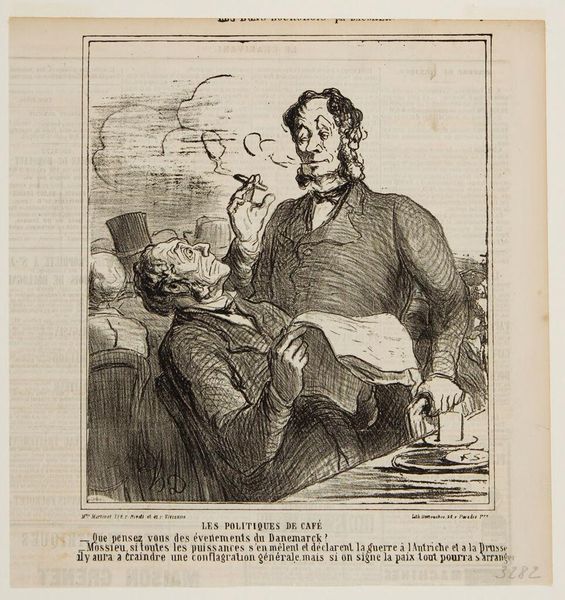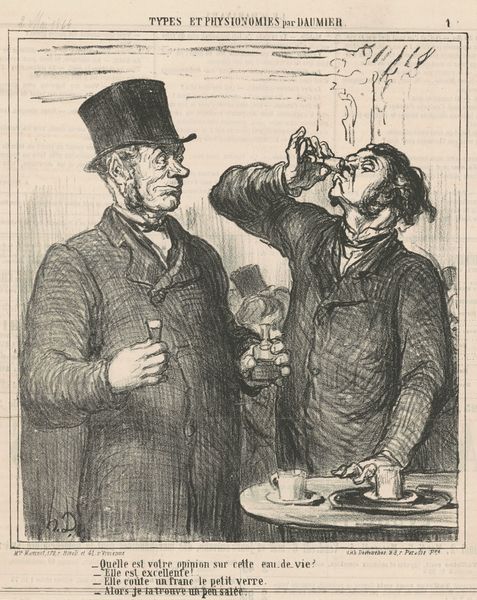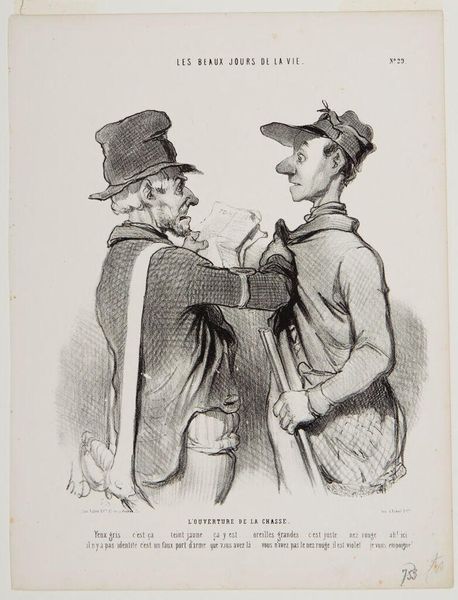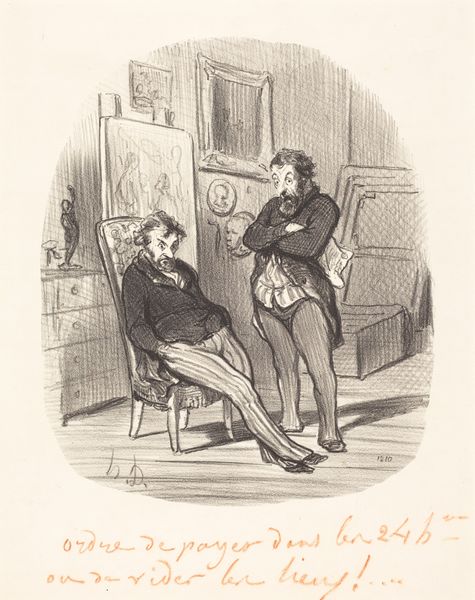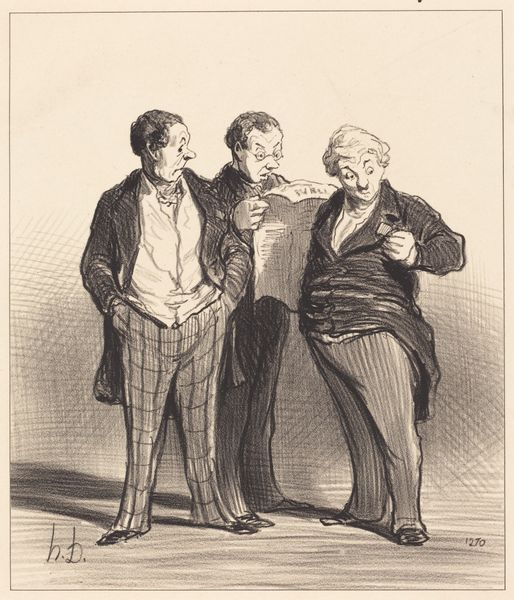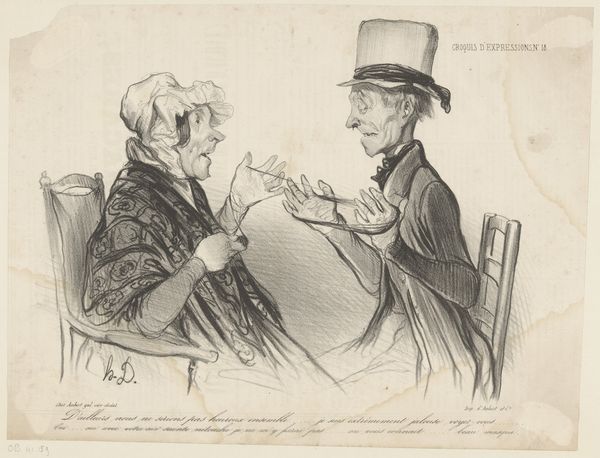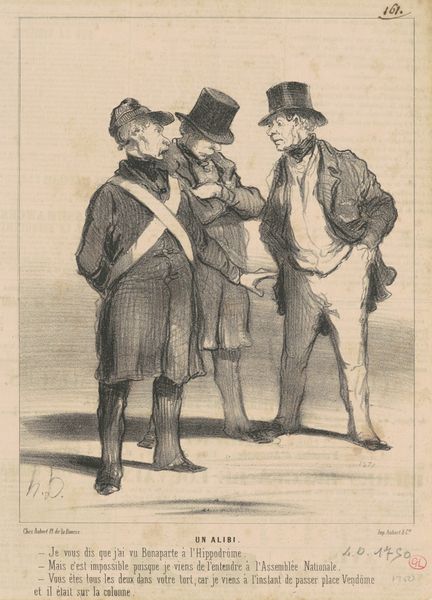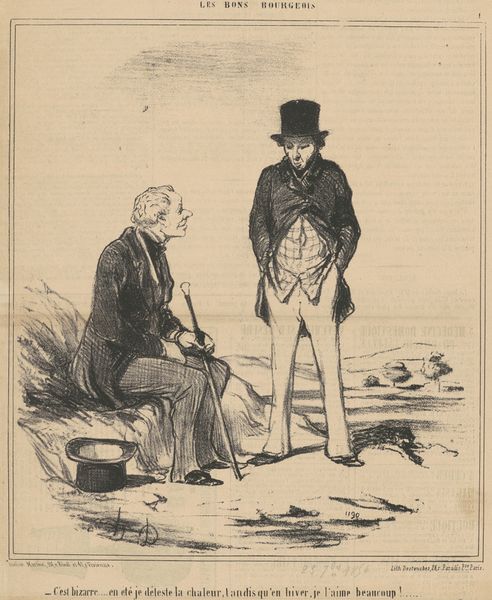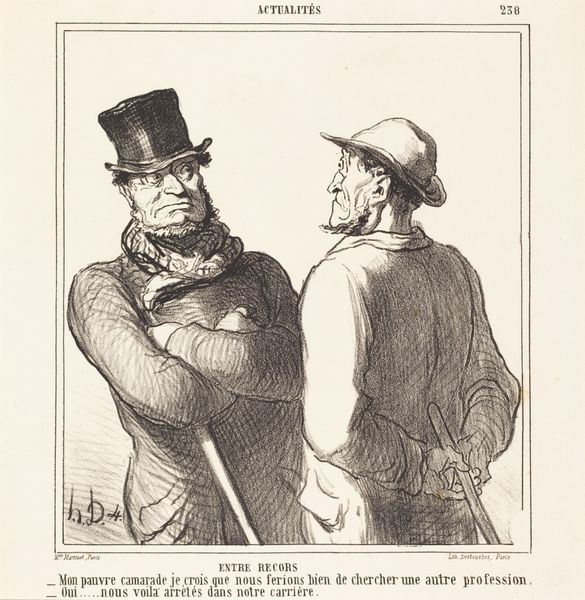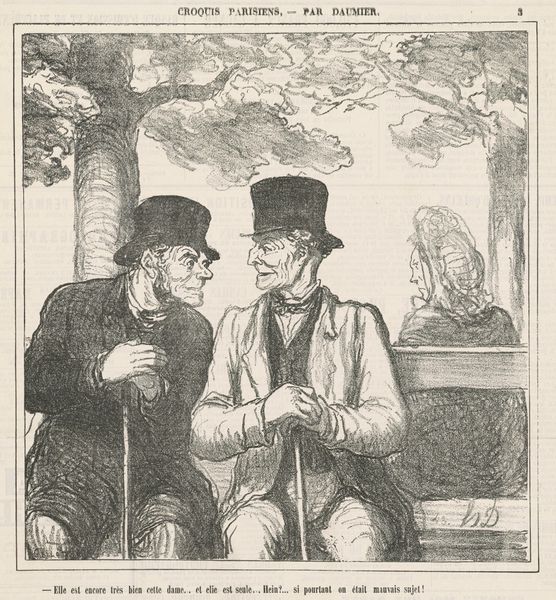
Copyright: National Gallery of Art: CC0 1.0
Curator: Here we have Honoré Daumier’s “Les Politiques de café,” a lithograph created in 1864. The print belongs to a series titled “Les Bons Bourgeois.” Editor: Immediately, the density of the marks catches my eye. Look at how the forms of these figures, these… politicians, are built through a network of lines. It feels heavy, claustrophobic even, reflecting perhaps the stifling atmosphere of political debate? Curator: That's astute. Daumier was a master of social commentary, and this work cleverly uses the mundane setting of a coffee house as a stage for observing the bourgeoisie’s often-exaggerated engagement with politics. This particular print critiques their somewhat uninformed opinions on international affairs, specifically the events surrounding Denmark. Editor: It's the texture I find compelling. The stark contrast between the deep blacks and untouched whites not only describes form, but also speaks to the material processes of lithography itself. The very act of creating the image—drawing on stone, the pressing of paper—becomes visible. You feel the hand of the artist, almost. It underscores the labor inherent in even these seemingly spontaneous "coffee shop" pronouncements. Curator: Precisely. And it speaks to Daumier's position as both artist and social critic, highlighting the absurdity and self-importance he perceived within the bourgeoisie, using print as an affordable and popular means to distribute that view widely. Consider, too, how printmaking, by its nature, allows for democratic dissemination, which heightens the impact of Daumier's pointed critique. Editor: Yes, this work bridges the gap between “high art” and accessible media. Lithography allowed Daumier's commentary to circulate and enter directly into public conversation, turning the act of printmaking into its own form of political participation. Curator: Indeed, this work serves as a lasting reminder of art's power to reflect and challenge societal norms, something Daumier understood deeply. Editor: It’s a forceful illustration of how art can become a mirror to its time and to the materials that make up our everyday experiences.
Comments
No comments
Be the first to comment and join the conversation on the ultimate creative platform.
